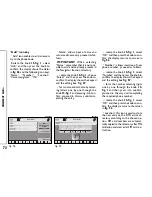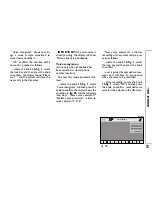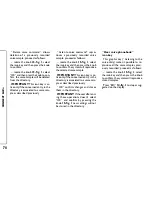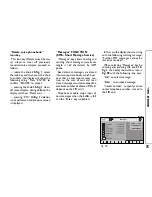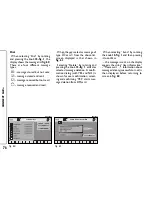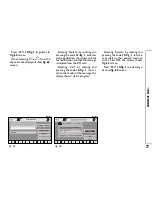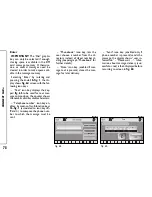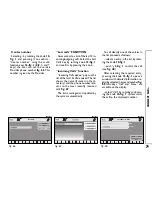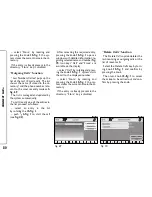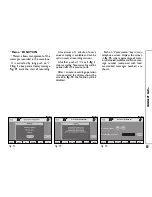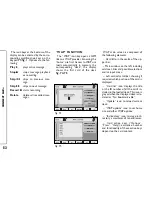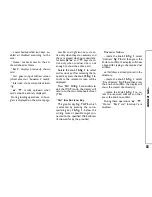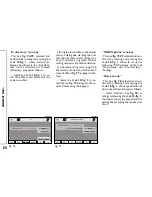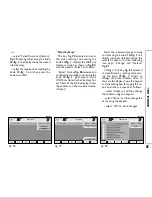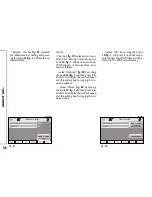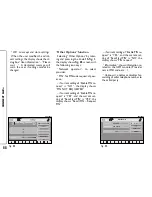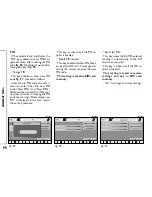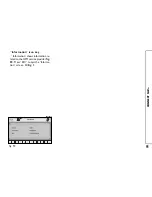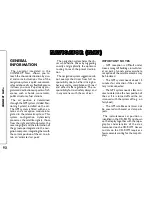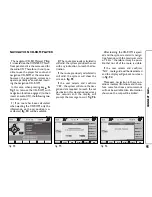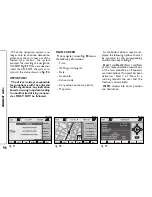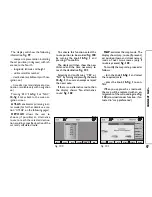
– Lower horizontal bar icon keys, en-
abled or disabled according to the
case:
“Home”: makes access to the ad-
dress defined as Home.
“Back”: displays previously shown
card.
“Go”: goes to input address screen
(direct access or “bookmark” recall);
“Interrupt”: stops current deck load-
ing;
“
N
”, “
O
”: scrolls up/down when
card cannot be entirely displayed.
During loading operations, an hour-
glass is displayed on the current page.
Low bar and right icon keys are ac-
tive only when they are necessary and
they are greyed when not consistent;
for example “
N
” and “
O
” keys are ac-
tive only when window size is not
enough to show the entire card.
Rotate the knob
15-fig. 1
to select
card action key; after selecting the re-
quired key press the knob
15-fig. 1
to
confirm; the relevant screen will be
displayed.
Press “ESC”
14-fig. 1
and confirm to
quit the WAP mode, the display will
return to the main telephone screen
(TEL).
“Go” low bar icon key
This graphic key
fig. 74-75
, which
is selected by pressing the corre-
sponding key
16-fig. 1
, below the
writing, makes it possible to get con-
nected to the specified Web address
(if allowed for by the provider).
Proceed as follows:
– rotate the knob
15-fig. 1
, select
“Address”
fig. 76
and then press the
knob to confirm; the display will show
a keypad for typing in the required net
address;
or, if address is already stored in the
directory:
– rotate the knob
15-fig. 1
, select
“Site directory”
fig. 76
and then press
the knob to confirm; the display will
show the stored site directory;
– rotate the knob
15-fig. 1
to se-
lect the required address and then
press the knob to confirm.
During these operations “
N
”, “
O
”,
“Home”, “Back” and “Interrupt” are
disabled.
83
CONNECT NA
V+




